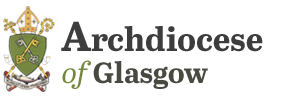The conclave to elect Pope Francis' successor will begin on May 7.
The decision was made by the cardinals at the end of the meeting convened today. Cardinal Pietro Parolin will preside over the conclave inside the Sistine Chapel, and it it will be he who asks the newly elected cardinal if he accepts the election and which name he will choose as Pope.
Sunday will conclude the 'novendiali', the nine days of mourning for Pope Francis.
"Extra omnes", "Everyone out", is the phrase that marks the beginning of the Conclave. The cardinal electors, who must be under 80, are prohibited from using any device or making contact with the outside world. The voting rules follow the norms promulgated by Pope John Paul II in 1996 later modified by Benedict XVI in 2007. According to the new provisions, if no-one has been elected after the 33rd or 34th vote, a runoff will take place between the two cardinals who received the most votes in the last ballot, but a two-thirds majority is still required.
Every day of the conclave there will be two smoke signals from the chimney of the Sistine Chapel - one at the end of the morning session (around 11am UK time) and the other at around 6pm UK time.
At the end of each vote, the ballots are burned with the addition of a dye: black, in the event of no election; white, if the new Holy Father has been chosen.
Once the election has taken place, white smoke will emerge and the six bells of St. Peter's will ring in celebration.
In the sacristy of the Sistine Chapel, a room is prepared with clothes for the new Pontiff. Once elected, the new Pope goes into the "room of tears", so called because it is the place where the chosen man often breaks down given the emotion of the moment, and changes into the white soutane before appearing on the central loggia above St Peter's to greet the crowds and give his blessing 'Urbi et Orbi' - to the city and the world.

